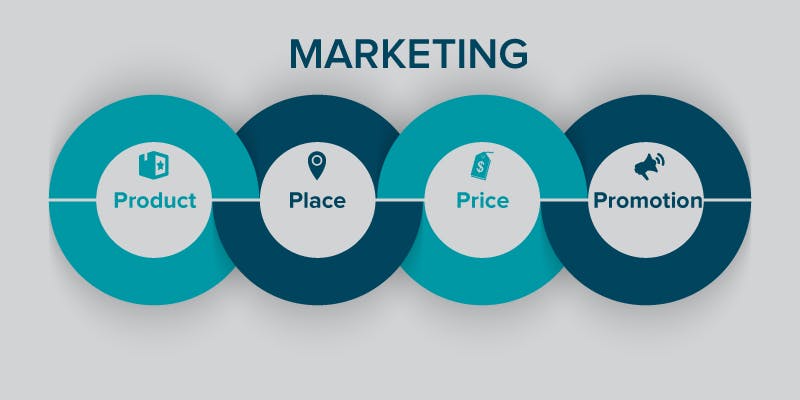When Neil H. Borden coined the term Marketing Mix and Professor E. Jerome McCarthy spoke for the first time about the “4 Ps”, certainly did not take into consideration the promotion channels on the Internet.
After all, this happened in the middle of the 20th century, and Google, Facebook, Twitter and company did not exist. Yet, this concept of long-lasting and universal marketing can in a certain sense also apply to online marketing.
Let’s see how the 4 Ps of marketing apply to Internet Marketing …

The 1st P of Marketing: Product
The product can be a real product or a service, and can be delivered directly to the consumer (B2C) or to companies (B2B). On the web, it is essential to show the product on your site. If you are a retailer with an e-commerce site, be sure to show your products closely and in detail. It is essential to have good photos of your products and very detailed descriptions on your site. There is no need to be flashy, but you have to make sure that a potential customer who passes on the site can easily access the main products that are offered and can see them in detail. Take the time, the effort to spend money and resources to accurately describe your products and services.
If you sell a service, this is something that a customer can not touch or hear, so make sure you have some success stories (case history) at your fingertips. Show success stories, rehearsals or demos on the website and be sure to do all of the above in a search engine friendly manner. If we put search engines in the equation, we will have a great opportunity on placement and promotion (third and fourth P).
The 2nd P of Marketing: Price
Do not be afraid to show prices online and in Internet advertising. In most cases, by displaying a price on an ad (a PPC, contextual, Banner, or even in your organic links listed on the search engine results pages (SERP), you will get a better click through rate and probable requests.
For high-level service companies this can be a bit tricky, but here too, to attract a potential customer’s attention, it may be useful to expose the price. It does not matter if the competition will see your pricing policy. In addition, in a high-level service business, viewing the price, you can counter unwanted contacts from customers who do not fit your required budget fields.

The 3rd P of Marketing: Place or Point of Sale
Here is the biggest difference with traditional marketing: positioning on the main search engines is in this case the main actor: a clear perspective is controlled by the Placement on the web is given through research. The site is our store, the more visible it is the better. When it comes to the web, it is essential to make sure that you appear in the search for relevant terms. If you are not present on the major search engines for terms related to your business, you are not taking care of your store, and it is very likely that you cannot be found or discovered in this important marketing channel.
Positioning on vertical search engines / guides and Local Search – the right vertical search engines, business directories and business and vertical search are also the most important channels … Do not miss this opportunity. Localized search suggestions, such as Google Places, can make the difference in being found and succeeding on the net.
Placement through affiliates – Working with affiliates and developing a large and profitable network can be really productive for many companies.
Create an extraordinary web design, a powerful and unique web copywriting and make sure you have effective landing pages (tested with a group) to “push” all types of Internet advertising.
The 4th P of Marketing: Promotion
I do not care if your business is B2C or B2B, you need to take advantage of every online promotion and strategy channel.
Promotion through Display Advertising – Banners based on CPM or CPC and e-mail newsletters can be very effective tools, if positioned correctly and designed with the user and target in mind.
Promotion through portals and news sites – Looking for the right sites is increasingly important, as the web user becomes more and more specific in the areas of interest. Present yourself to the target audience effectively, promoting your site on the reference portals of the sector.
Promotion through Search Marketing – SEO and SEM are essential for strong promotion: high information content, strategic link building, high quality directories and article marketing can do a lot.
Promotion through social media – Leveraging the main social networks (Facebook, Twitter, LinkedIn, G +, etc.), promoting viral content and the development of a group of followers is essential for long-term success, and above all by the possibility of offering the product or service to the right people.
Promotion through Public Relations – Management of PR 2.0 and reputation are important factors. Do not be shy in the media and blogs and be remembered for what you do and the quality of your products. Take advantage of the latest and best channels available. Be sure to pay attention to the most influential sites on the Internet.